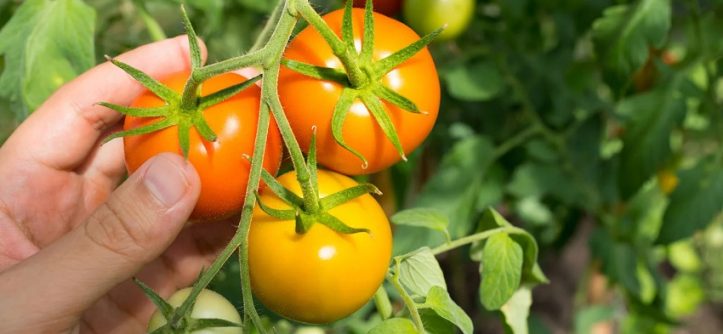Vegetables may be nutritious, but they’re not foolproof! Sometimes the inside of vegetables starts turning a dirty green color and we’re left wondering why to figure out how to get them back in their original state. Tomato Green Inside: Condition, Nutrition And Soil offers insights on removing this off-putting hue for a fresh ingredient.
What is a Tomato Green Inside?
Tomato green inside is a condition found on tomatoes where the center of the fruit is red, green and often mushy. This condition is caused by a number of factors, but chiefly by a lack of Oxygen and Vitamin C. The lack of these nutrients stunts the growth of the fruit and can lead to rot. Sometimes, tomato green inside can also be exacerbated by poor soil quality and over-watering conditions. While there isn’t a definitive cure for this condition, working to improve your tomato’s nutritional situation can help alleviate symptoms.
The Cause of a Tomato Green Inside
Tomato green inside is a common problem faced by tomato growers across the world. This article will discuss the cause of this issue, its effect on production, and how to prevent it.
Background
Tomato green inside refers to a condition in which the tomato’s skin turns an abnormal green color. This discoloration is usually due to various factors, including poor soil quality, low levels of magnesium or potassium in the plants’ environments, or genetics. Inside tomato green can significantly negatively affect plant health and production.
Cause
There are a number of different factors that can cause a tomato to be green inside. Poor soil quality is one of the most common, as it often leads to deficiencies in important nutrients like magnesium and potassium. Low levels of these nutrients can also lead to chlorosis (a condition in which leaf cells become yellow), stunted growth, and other problems. Genetics can also play a role, as some plants are more prone to developing tomato green inside than others.
Impact
Tomato green inside has a significant impact on plant health and production. It can stunt growth, cause chlorosis (a condition in which leaves become yellow), and lead to other problems. However, it doesn’t usually lead to a complete die-off, and the plants can recover from problems caused by the tomato’s green inside. It can take many years for tomato varieties to disappear completely.
The Preservation Method of a Tomato Green Inside
Tomatoes are one of the most popular vegetables in the world and can be eaten fresh or preserved in a variety of ways. There are several ways to preserve tomatoes, but the most common is using a tomato green inside.
Condition: Tomatoes must be in good condition before they are canned. They should have no bruises, soft spots or damaged skin.
Nutrition: Tomatoes need plenty of water to help them ripen properly, so ensure they are regularly watered before picking. When pickling, avoid adding salt because it can irritate the skin.
Soil: The best soil for growing tomatoes is a well-drained loam that is part sand. You can also use potting mix and add some organic matter, such as compost or manure.
Conclusion
This tomato is beginning to lose its green color and has begun to turn a dull red. Despite these changes, the tomato still contains all of the nutrients it did when it was fresh. Left on the vine too long, tomatoes can become bland and have poor flavor. If you want to keep your tomatoes edible for longer than a few days, be sure to spray them with an organic solvent such as neem or pyrethrum before storing them in a cool dark place. In addition to keeping your tomatoes healthy and flavorful, proper soil preparation will also help ensure high fruit yields.




